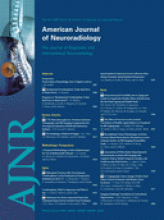We appreciate the opportunity to respond to the thoughtful editorial regarding our studies investigating the efficacy and safety of vertebroplasty that were published recently in the New England Journal of Medicine.1,2 The author of the editorial presents his personal anecdotal experience of successful outcomes of vertebroplasty as “evidence” that vertebroplasty is efficacious, while suggesting that our results, based on the most rigorous of study designs, the randomized placebo-controlled trial, are erroneous. We would point out that the findings in our 2 independent studies of statistically significant and clinically important improvement, both immediate and sustained, following the procedure are in keeping with his anecdotal experience and the results of previous studies. The magnitude of improvement in pain in the vertebroplasty-treated groups was similar in the 2 trials and consistent with improvements reported in previous uncontrolled and controlled augmentation trials, including the VERTOS and Fracture Reduction Efficacy (FREE) studies.3,4
In contrast to previous studies, our trials compared the experiences of those who received vertebroplasty with those who received a sham procedure with the added methodologic constraint that treatment allocation was blinded in both participants and the outcome assessors, thereby reducing the potential for bias in estimating the treatment effect. Both trials observed that subjects in the control groups improved following the procedure, with neither trial demonstrating a difference between the active and placebo groups in the magnitude of improvement in pain or functional status. It would appear that it is this observation that is most difficult for the author of the editorial and others to accept. As discussed in both of our articles, possible explanations for a discordance between the perceived results of clinical practice and the results of unblinded uncontrolled studies versus the findings from blinded placebo-controlled trials include the self-limited natural history of vertebral fractures, regression to the mean, and the placebo response. While we consider it unlikely that local anesthesia would have a sustained effect, investigators at 1 site have already undertaken new trials to further probe the relevance of local anesthesia in painful vertebral fractures.
The author casts doubt on the validity of our trials by questioning the vertebroplasty techniques used in our studies. We are not aware of any evidence to support his view that the cement volume in our trials was suboptimal. The investigators of 1 of the trials previously found no association between cement volume and patient outcomes following vertebroplasty.5
Although neither trial reached the prespecified sample sizes, both trials had more than adequate power to detect clinically important differences between groups with respect to their primary efficacy end points. The a priori target sample size for the Australian trial1 was large because the trial was also designed to test other hypotheses regarding safety, including incident fracture rate, which would have required a larger sample size. The Investigational Vertebroplasty Efficacy and Safety Trial (INVEST) was initially powered to detect very small differences in outcome, far less than the minimally clinically relevant difference in pain and function. The investigators of both trials would have been thrilled to enroll more patients, but recruitment was hampered by the widespread acceptance and availability of the treatment in both trial settings. Recent estimates indicate that well over 150,000 augmentation procedures are done annually in the United States. Vertebroplasty has been publicly funded in Australia since November 2005, after which referral to the Australian study enrollment declined.
The author raises legitimate issues regarding the crossover rates and treatment results in eligible but nonenrolled patients in the INVEST trial. We are actively investigating these issues. We would point out, though, that crossover was nearly nonexistent before our primary outcome assessment at 1 month; thus, the differential rates of crossover do not invalidate our primary efficacy results. The author of the editorial notes concern about potential unblinding with time, but we should emphasize that unblinding would serve to increase, rather than decrease, the apparent benefit of augmentation (patients who knew they received vertebroplasty would be expected to have greater pain relief than patients who knew they received the control procedure). Even if unblinding did occur, the observation that the mean pain improvement was nearly identical between groups casts further doubt on the efficacy of cement in relieving pain.
We have had experiences similar to those of the author of “miracle cures” following vertebroplasty in our usual clinical practices. However, unbiased blinded assessment in both trials yielded similar observations of “miracle cures” in both the vertebroplasty and the control intervention groups. It is also important to note that vertebroplasty is not without risk—1 patient in the vertebroplasty group in the INVEST trial had a thecal sac tear and 1 patient in the vertebroplasty group in the Australian trial developed osteomyelitis. Whether vertebroplasty increases the risk of further vertebral fractures is still open to debate.
Publication of the INVEST and Australian vertebroplasty studies represents a fork in the road for augmentation and interventional radiology in general. We could ignore the trials or try to show that they were fatally flawed and continue to practice augmentation as always, or we could accept the trial results and cease augmentation altogether. A third approach would be to carefully consider the strengths and weaknesses of all available augmentation research to date to determine whether further studies are warranted. If the author of the editorial or others or both still believe that augmentation confers large benefits that outweigh any potential risks, then the onus is on them to prove it in high-quality, well-designed studies.
Judging from the early vociferous response to these trials, it would appear to us that many practitioners will only embrace evidence that supports their pre-existing beliefs. Because of these trials, perhaps more practitioners can be convinced to turn away from “belief-based medicine” and toward “evidence-based medicine.”
References
- Copyright © American Society of Neuroradiology







